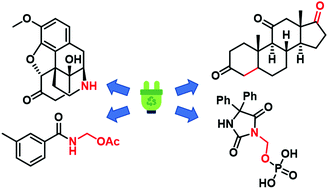Synthesis of active pharmaceutical ingredients using electrochemical methods: keys to improve sustainability
Abstract
Organic electrochemistry is receiving renewed attention as a green and cost-efficient synthetic technology. Electrochemical methods promote redox transformations by electron exchange between electrodes and species in solution, thus avoiding the use of stoichiometric amounts of oxidizing or reducing agents. The rapid development of electroorganic synthesis over the past decades has enabled the preparation of molecules of increasing complexity. Redox steps that involve hazardous or waste-generating reagents during the synthesis of active pharmaceutical ingredients or their intermediates can be substituted by electrochemical procedures. In addition to enhance sustainability, increased selectivity toward the target compound has been achieved in some cases. Electroorganic synthesis can be safely and readily scaled up to production quantities. For this pupose, utilization of flow electrolysis cells is fundamental. Despite these advantages, the application of electrochemical methods does not guarantee superior sustainability when compared with conventional protocols. The utilization of large amounts of supporting electrolytes, enviromentally unfriendly solvents or sacrificial electrodes may turn electrochemistry unfavorable in some cases. It is therefore crucial to carefully select and optimize the electrolysis conditions and carry out green metrics analysis of the process to ensure that turning a process electrochemical is advantageous.

- This article is part of the themed collection: Green Synthesis


 Please wait while we load your content...
Please wait while we load your content...